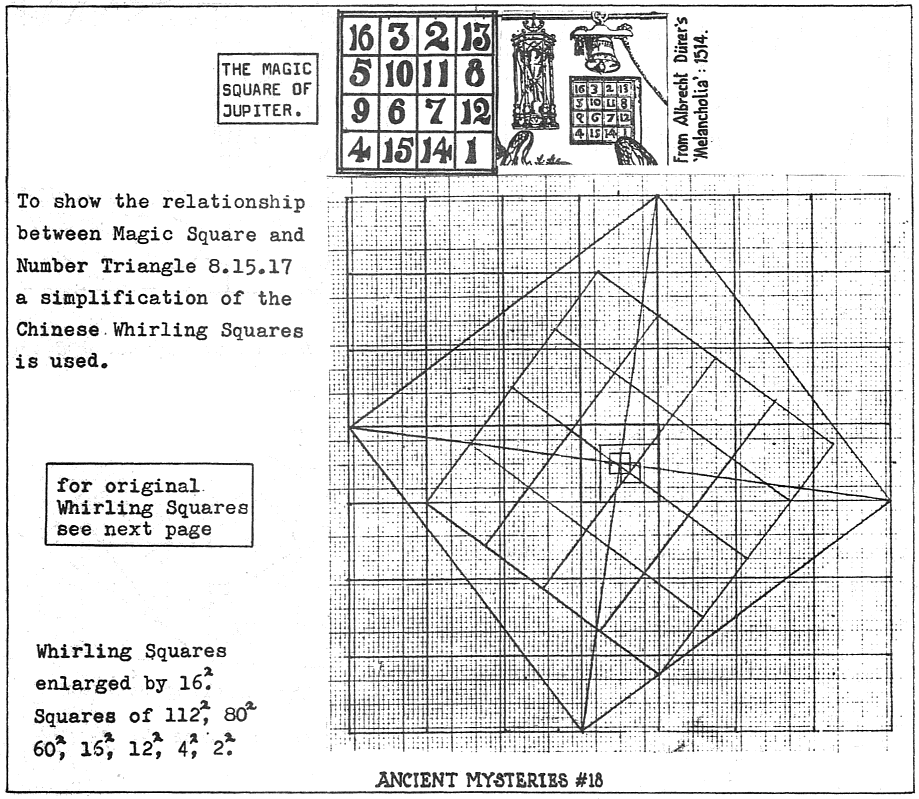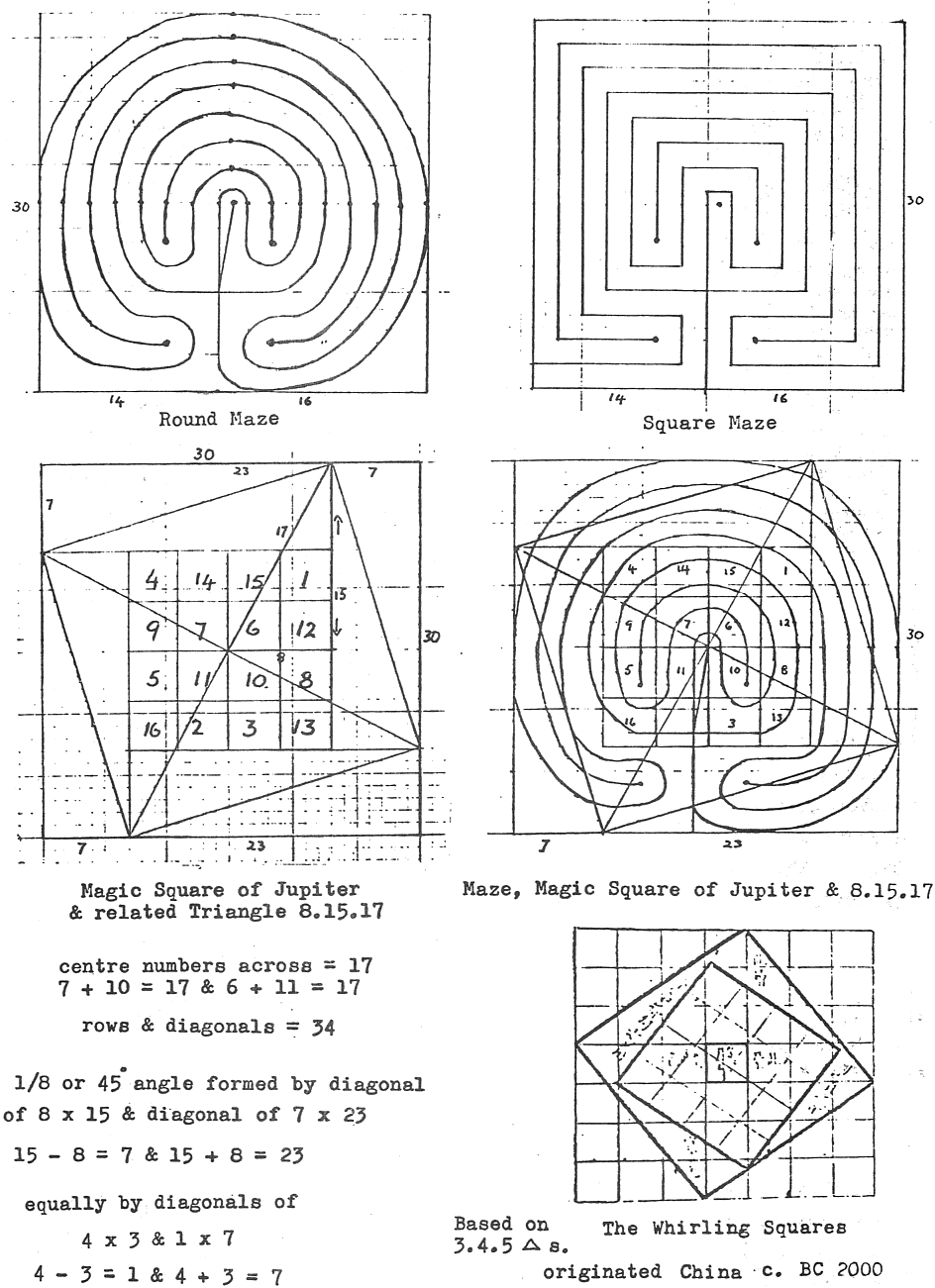
Ancient Mysteries no. 18, January 1981 (continuation of Journal of Geomancy)
{23}
The Hopi Indians say, according to Frank Waters, that the square mazes are for women and the round ones for men. I heartily endorse this distinction. In squaring the maze it is far more easy to define exactly its proportions! These necessary proportions turn out to be a square of 30 and the diagonal of a 1 × 7 rectangle. This diagonal links the centre of the cross on which it is constructed to the centre of the path, which is the ‘Minotaur’ point as it were. It is the point of return.
Soon after I had made this out, I was delighted to find in Schwaller de Lubicz’s book about the ancient Egyptians, The Temple of Man, that they considered this diagonal as sacred and that part of the Temple at Luxor was constructed upon it.
This made me enquire further concerning the properties of a 1 × 7 diagonal. I realized that it was an integral part of a 3,4,5 Pythagorean triangle, forming a 45° or 1/8th angle with the hypotenuse. And equally the diagonal of a 7 × 17 rectangle bears the same relationship to a 5,12,13 triangle. To find this diagonal for any Pythagorean triangle is an easy matter. Subtract the first two numbers and then add them together. 4 − 3 = 1, 4 + 3 = 7; equally 12 − 5 = 7 and 12 + 5 = 17. This is not all. Pythagorean triangles relate closely to Magic Squares and one of these Magic Squares, that of Jupiter, relates in its overall presentation to a square of 30. So a pattern can be made showing a maze, a Magic Square and Pythagorean triangles all fitting closely together. The triangles will be of the 8,15,17 variety.

{24}
